Research Article - (2023) Volume 31, Issue 5
Received: 09-May-2023, Manuscript No. IPQPC-23-16416; Editor assigned: 12-May-2023, Pre QC No. IPQPC-23-16416 (PQ); Reviewed: 26-May-2023, QC No. IPQPC-23-16416; Revised: 23-Oct-2023, Manuscript No. IPQPC-23-16416 (R); Published: 30-Oct-2023, DOI: 10.36648/1479-1064.31.5.37
Background: The understanding of hospitalization fever remains limited. Improving care could be facilitated by considering specific diseases associated with fevers, as indicated by ICD9 codes in admission or discharge notes.
Methods: We conducted an analysis using data from Taipei medical university hospital, examining 59,772 inpatient admissions and 425,488 nights of stay annually between 2007 and 2009. Decision tree and rule induction techniques were employed to characterize fever related diseases during hospitalization. Association rules were generated to suggest and validate comorbidities beyond those related to fever.
Conclusions: Throughout the three years period, fever consistently ranked as the most frequent ICD9 code in inpatient health records, including admission and discharge notes, accounting for over 25% of the top six most common codes. Our study illustrated the diseases associated with fever and their comorbidities. Notably, 81.193% of fever related ICD9 codes occurred fewer than 14 times, and the association rules for fever related comorbidities improved care with a 48.077% coverage rate through appropriate CPOE implementation.
ICD9CM; Inpatient admission; Fever; Comorbidity; CPOE; Data analysis; EHR; Medical informatics
Prelude
The ICD9 code 780.6, representing fever, emerged as the most prevalent code across all inpatient admission and discharge notes at TMUH from 2007 to 2009. It appeared in 6,446 instances among 3,212 inpatients (for instance, a single admission on 2008/07/14 even included 6 fever codes), accounting for 22,9495 occurrences out of the total 59,772 inpatient cases. Notably, its frequency was 0.317 times higher than that of the second most common code, which referred to unspecified leiomyoma of the uterus (Figure 1). Fever can be attributed to various types of inflammation and underlying causes. To effectively address this significant challenge faced by inpatients, it is crucial to elucidate and predict the etiology of fever along with its comorbidities. By doing so, we can provide valuable assistance through the implementation of Computerized Physician Order Entry (CPOE), facilitating improved patient care [1].
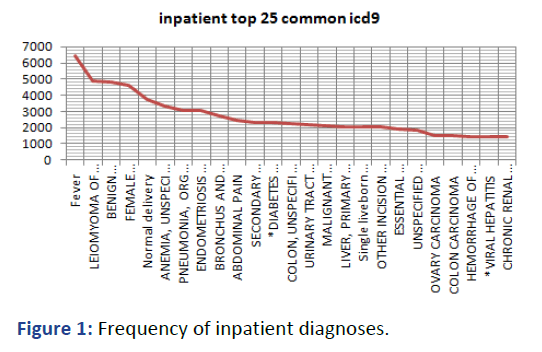
Figure 1: Frequency of inpatient diagnoses.
Data and Variables
Taipei Medical University Hospital (TMUH) is a healthcare institution established in 1976 in Taiwan. For this study, we obtained comprehensive data on all inpatient health records from TMUH, with Personally Identifying Information (PII) encrypted. The data was provided by the unified informatics office in TMU, covering the period from January 1, 2007, to December 31, 2009.
Study Data Set
Each individual included in the health records, without any personal privacy concerns, was assigned five ICD9 code slots in the admission notes and eight ICD9 code slots in the discharge notes. The number of entered code slots per admission varied, ranging from 2 to 10 codes, with an average of 3.8211 codes. Notably, fever consistently ranked as the most prevalent code throughout each year from 2007 to 2009. Specifically, it occurred 2,199 times among 1,097 hospitalizations in 2007, 2,151 times among 1,068 hospitalizations in 2008, and 2,096 times among 1,047 hospitalizations in 2009 (Table 1).
| Year | Count | ICD9 | Name |
|---|---|---|---|
| 2007 | 2199 | 780.6 | Fever |
| 2008 | 2151 | 780.6 | Fever |
| 2009 | 2096 | 780.6 | Fever |
| 2009 | 1860 | 220 | Benign neoplasm of ovary |
| 2009 | 1818 | 218.9 | Leiomyoma of uterus, unspecified |
| 2008 | 1775 | 174.9 | Female breast, unspecified carcinoma |
| 2008 | 1614 | 218.9 | Leiomyoma of uterus, unspecified |
| 2008 | 1568 | 220 | Benign neoplasm of ovary |
| 2009 | 1526 | 174.9 | Female breast, unspecified carcinoma |
| 2007 | 1464 | 218.9 | Leiomyoma of uterus, unspecified |
| 2007 | 1392 | 220 | Benign neoplasm of ovary |
| 2009 | 1356 | 650 | Normal delivery |
| 2007 | 1349 | 174.9 | Female breast, unspecified carcinoma |
| 2007 | 1262 | 155.2 | Malignant neoplasm of liver, not specified as |
Table 1: Number of inpatient ICD9 code slots.
Comorbidity
Fever related ICD9 analysis: For the majority of cases, diagnostic categories are identified by three digit ICD-9 codes (referred to as ICD9_p). These three digit codes should be utilized only when there are no decimals (known as "diagnostic subcategories" according to ICD-9) within the specific category [2]. Above these numerical digits, there exist comprehensive lists of codes in the international statistical classification of diseases and related health problems (ICD-9) [3]. This three tiered hierarchy within the ICD-9 coding system enables us to perform plotting, decision tree analysis, and rule induction based on different levels of granularity. To specify the diagnostic classes within these diagnostic categories, we will utilize the serial numbers (referred to as cat_id) provided in the following Table 2.
| Class | Lower | Upper | Name |
|---|---|---|---|
| 1 | 1 | 139 | Infectious and parasitic diseases |
| 2 | 140 | 239 | Neoplasms |
| 3 | 240 | 279 | Endocrine, nutritional and metabolic diseases and immunity disorders |
| 4 | 280 | 289 | Diseases of the blood and blood forming organs |
| 5 | 290 | 319 | Mental disorders |
| 6 | 320 | 359 | Diseases of the nervous system |
| 1 | 360 | 389 | Diseases of the sense organs |
| 8 | 390 | 459 | Diseases of the circulatory system |
| 9 | 460 | 519 | Diseases of the respiratory system |
| 10 | 520 | 579 | Diseases of the digestive system |
| 11 | 580 | 629 | Diseases of the genitourinary system |
| 12 | 630 | 679 | Complications of pregnancy, childbirth and puerperium |
| 13 | 680 | 709 | Diseases of the skin and subcutaneous tissue |
| 14 | 710 | 739 | Diseases of the musculoskeletal system and connective tissue |
| 15 | 740 | 759 | Congenital anomalies |
| 16 | 760 | 779 | Certain conditions originating in the perinatal period |
| 17 | 780 | 799 | symptoms, signs and ill-defined conditions |
| 18 | 800 | 999 | Injury and poisoning |
| 19 | E800 | E999 | External causes of injury |
| 20 | V01 | V91 | Supplementary classification of factors influencing health status and contact with health services |
Table 2: Diagnostic categories.
Association rules recommendation and validation: By analyzing the associations among ICD-9 codes related to fever within individual patients, we can propose suggestions for one fever related ICD-9 code based on another. By dividing the three years inpatient health records into various train/test ratios, we can assess the efficacy of this approach and better understand its performance based on the characteristics of inpatient fever.
Fever Related ICD9
Through the analysis of ICD9 codes from patients with fever but without fever-related diagnoses, we generated a word cloud representing the top 100 popular ICD9 codes within the fever category. The results revealed the following findings: 807 entries for urinary tract infection (site not specified), 636 entries for pneumonia (organism unspecified), 314 entries for abdominal pain, 192 entries for other and unspecified noninfectious gastroenteritis and colitis, and 180 entries for bronchopneumonia (organism unspecified) (Figure 2). By excluding the decimals in the icd9 codes, we generated a word cloud representing the top 100 popular diagnostic categories within the fever category. The results indicated the following findings: 843 entries for *other disorders of urethra and urinary tract, 636 entries for pneumonia (organism unspecified), 486 entries for *acute bronchitis and bronchiolitis, 400 entries for *other symptoms involving abdomen and pelvis, and 320 entries for *septicaemia (Figure 3).
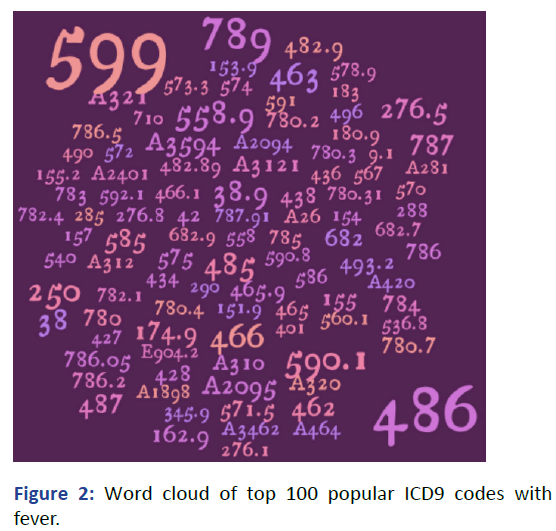
Figure 2: Word cloud of top 100 popular ICD9 codes with fever.
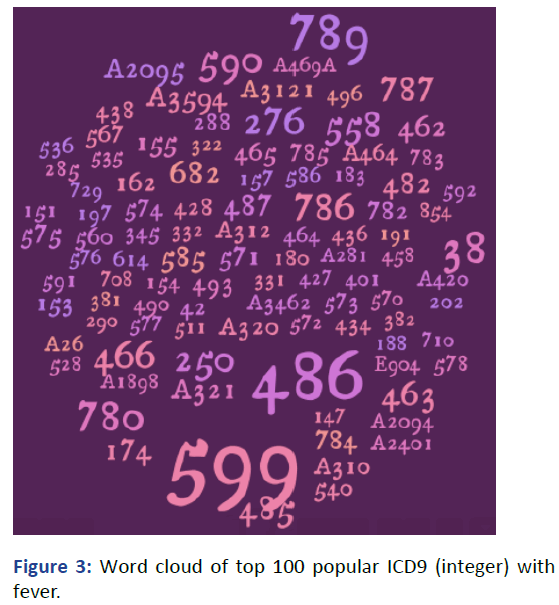
Figure 3: Word cloud of top 100 popular ICD9 (integer) with fever.
The Figures 4-6 present bubble charts where the size of the bubbles corresponds to the entry counts of ICD9 or ICD9_p codes. These charts display the prominent codes within their respective diagnostic classes, with the codes arranged horizontally. Notably, the most popular ICD9 codes fall within the range of 550-600, followed by codes in the range of 450-500, and then codes in the range of 750-800, which aligns with the earlier mentioned word cloud (Table 3). However, in the case of ICD9_p codes, certain smaller bubbles merge to form larger ones. As a result, *acute bronchitis and bronchiolitis (code 466) becomes the third-largest bubble, while the top bubble remains within the cat_id 11, corresponding to diseases of the genitourinary system (Table 4). In terms of diagnostic classes, the accumulated counts of cat_id 9 (diseases of the respiratory system) and cat_id 17 (symptoms, signs, and ill-defined conditions) surpass cat_id 11, making them the top two categories (Table 5).
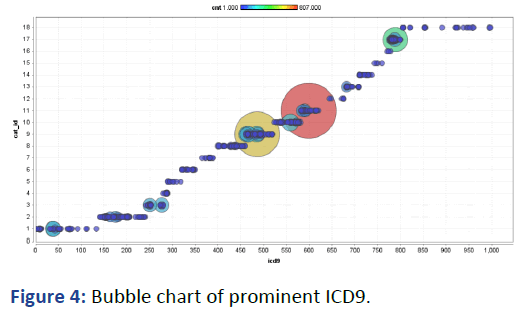
Figure 4: Bubble chart of prominent ICD9.
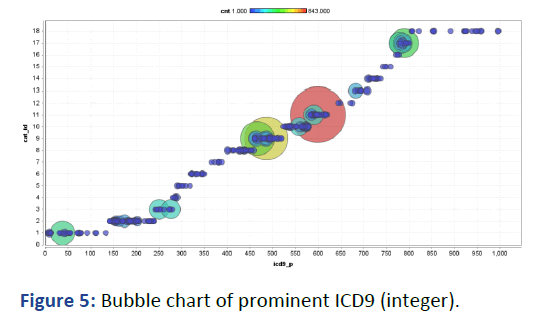
Figure 5: Bubble chart of prominent ICD9 (integer).
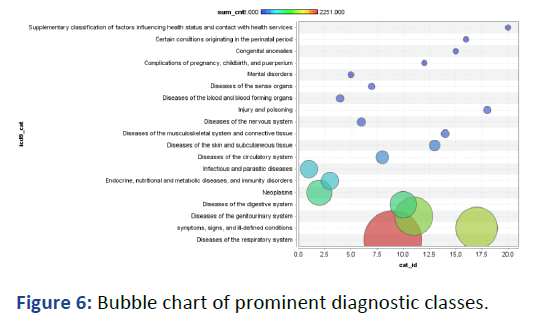
Figure 6: Bubble chart of prominent diagnostic classes.
| ICD9 | Entries | Name |
|---|---|---|
| 599 | 807 | Urinary tract infection, site not specified |
| 486 | 636 | Pneumonia, organism unspecified |
| 789 | 314 | Abdominal pain |
| 558.9 | 192 | Other and unspecified non-infectious gastroenteritis and colitis |
| 485 | 180 | Bronchopneumonia, organism unspecified |
| 463 | 178 | Acute tonsillitis |
| 466 | 173 | Acute bronchitis |
| 38 | 160 | *Septicaemia |
| 38.9 | 158 | Unspecified septicaemia |
| 276.5 | 152 | Volume depletion |
| 787 | 137 | Nausea and vomiting |
| 250 | 136 | *Diabetes mellitus |
| 462 | 134 | Acute pharyngitis |
| 487 | 134 | *Influenza |
| 590.1 | 126 | Acute pyelonephritis without lesion of renal medullary necrosis |
Table 3: Top ICD9 code with fever.
| ICD9_p | Entries | Name |
|---|---|---|
| 599 | 843 | *Other disorders of urethra and urinary tract |
| 486 | 636 | Pneumonia, organism unspecified |
| 466 | 486 | *Acute bronchitis and bronchiolitis |
| 789 | 400 | *Other symptoms involving abdomen and pelvis |
| 38 | 320 | *Septicaemia |
| 780 | 285 | *General symptoms |
| 590 | 248 | *Infections of kidney |
| 250 | 244 | *Diabetes mellitus |
| 276 | 238 | *Disorders of fluid, electrolyte and acid-base balance |
| 786 | 238 | *Symptoms involving respiratory system and other chest symptoms |
| 558 | 214 | *Other non-infectious gastroenteritis and colitis |
| 787 | 185 | *Symptoms involving digestive system |
| 485 | 180 | Bronchopneumonia, organism unspecified |
| 463 | 178 | Acute tonsillitis |
| 682 | 156 | *Other cellulitis and abscess |
Table 4: Top ICD9 (integer) with fever.
| cat_id | Entries | Name |
|---|---|---|
| 9 | 2251 | Diseases of the respiratory system |
| 17 | 1552 | symptoms, signs and ill-defined conditions |
| 11 | 1406 | Diseases of the genitourinary system |
| 10 | 900 | Diseases of the digestive system |
| 2 | 861 | Neoplasms |
| 3 | 516 | Endocrine, nutritional and metabolic diseases and immunity disorders |
| 1 | 514 | Infectious and parasitic diseases |
| 8 | 317 | Diseases of the circulatory system |
| 13 | 240 | Diseases of the skin and subcutaneous tissue |
| 14 | 132 | Diseases of the musculoskeletal system and connective tissue |
| 6 | 126 | Diseases of the nervous system |
| 18 | 106 | Injury and poisoning |
| 4 | 103 | Diseases of the blood and blood forming organs |
| 7 | 56 | Diseases of the sense organs |
| 5 | 35 | Mental disorders |
| 12 | 18 | Complications of pregnancy, childbirth and puerperium |
| 255 15 | 14 | Congenital anomalies |
| 16 | 12 | Certain conditions originating in the perinatal period |
| 20 | 8 | Supplementary classification of factors influencing health status and contact with health services |
Table 5: Top diagnostic classes with fever.
Distribution of Fever Related ICD9
The study sample comprised a total of 59,772 inpatient admissions, with 16,785 admissions in 2007, 19,836 admissions in 2008, and 23,151 admissions in 2009. By combining the ICD9 entries from both admission and discharge records, we observed that the distributions of icd9 and icd9_p code frequencies exhibited a long tail pattern. The majority of ICD9 codes occurred within 28 instances (accounting for 90.213% of icd9 codes) and 81.061% of ICD9_p codes (Table 6). Furthermore, the highest number of occurrences was found in the 2 occurrence category, encompassing 46.177% of fever related icd9 codes and 38.719% of fever related ICD9_p codes (Figure 7).
| Entries | ICD9 | ICD9% | ICD9_p | ICD9_p% |
|---|---|---|---|---|
| 1 | 7 | 1.07 | 3 | 0.836 |
| 2 | 302 | 47.247 | 139 | 39.555 |
| 3 | 2 | 47.553 | 2 | 40.112 |
| 4 | 86 | 60.703 | 37 | 50.418 |
| 5 | 1 | 60.856 | 0 | 50.418 |
| 6 | 53 | 68.96 | 29 | 58.496 |
| 7 | 1 | 69.113 | 0 | 58.496 |
| 8 | 27 | 73.241 | 13 | 62.117 |
| 9 | 2 | 73.547 | 1 | 62.396 |
| 10 | 10 | 75.076 | 9 | 64.903 |
| 11 | 1 | 75.229 | 1 | 65.182 |
| 12 | 24 | 78.899 | 9 | 67.689 |
| 13 | 0 | 78.899 | 2 | 68.246 |
| 14 | 15 | 81.193 | 4 | 69.36 |
| 16 | 18 | 83.945 | 12 | 72.703 |
| 18 | 8 | 85.168 | 7 | 74.653 |
| 20 | 7 | 86.238 | 5 | 76.046 |
| 22 | 6 | 87.155 | 3 | 76.882 |
| 24 | 6 | 88.072 | 9 | 79.389 |
| 26 | 10 | 89.601 | 3 | 80.225 |
| 28 | 4 | 90.213 | 3 | 81.061 |
Table 6: Distribution of ICD9 and ICD9_p occurrence with fever.
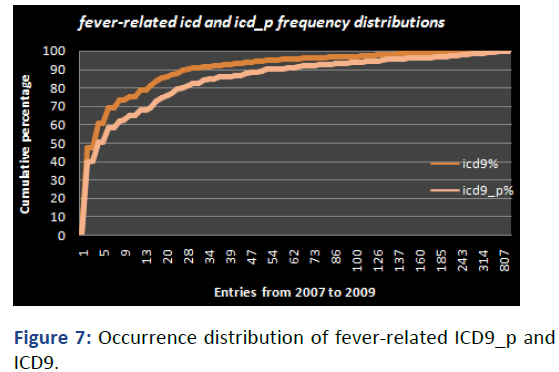
Figure 7: Occurrence distribution of fever-related ICD9_p and ICD9.
In terms of the finest granularity, the top 10 frequent icd9 codes accounted for 33.319% of the entries in the three-year period. Specifically, urinary tract infection (site not specified) contributed to 9.115% of the entries, pneumonia (organism unspecified) accounted for 7.183%, abdominal pain represented 3.546%, other and unspecified noninfectious gastroenteritis and colitis contributed 2.169%, bronchopneumonia (organism unspecified) accounted for 2.033%, acute tonsillitis represented 2.01%, acute bronchitis represented 1.954%, *septicaemia accounted for 1.807%, unspecified septicaemia represented 1.785%, and volume depletion accounted for 1.717% (Figure 8). moving on, the top ten ICD9_p codes covered 42.958% of the entries, with * other disorders of urethra and urinary tract contributing to 9.196%, pneumonia (organism unspecified) accounting for 6.938%, *acute bronchitis and bronchiolitis representing 5.302%, *other symptoms involving abdomen and pelvis accounting for 4.363%, *septicaemia representing 3.491%, * general symptoms accounting for 3.109%, *infections of kidney representing 2.705%, *diabetes mellitus accounting for 2.662%, *disorders of fluid (electrolyte and acid-base balance) representing 2.596%, and *symptoms involving respiratory system and other chest symptoms accounting for 2.596% (Figure 9). At a higher level of granularity, the top 10 diagnostic classes covered 94.785% of the entries. Diseases of the respiratory system accounted for 24.555%, symptoms and signs and ill-defined conditions represented 16.93%, diseases of the genitourinary system accounted for 15.338%, diseases of the digestive system represented 9.818%, neoplasms accounted for 9.392%, endocrine and nutritional and metabolic diseases and immunity disorders represented 5.629%, infectious and parasitic diseases accounted for 5.607%, diseases of the circulatory system represented 3.458%, diseases of the skin and subcutaneous tissue accounted for 2.618%, and diseases of the musculoskeletal system and connective tissue represented 1.44% (Figure 10).
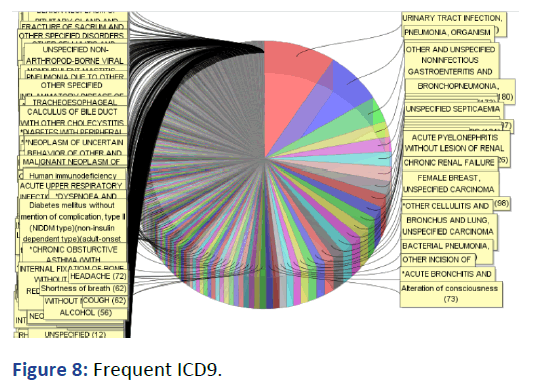
Figure 8: Frequent ICD9.
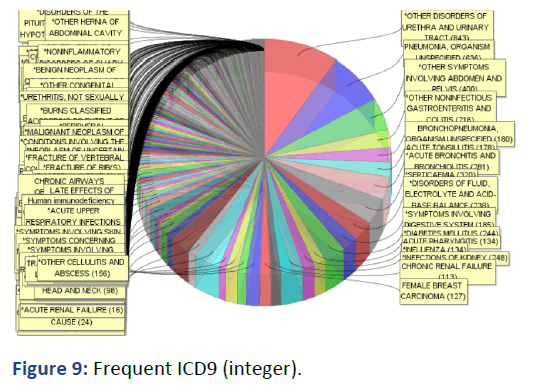
Figure 9: Frequent ICD9 (integer).
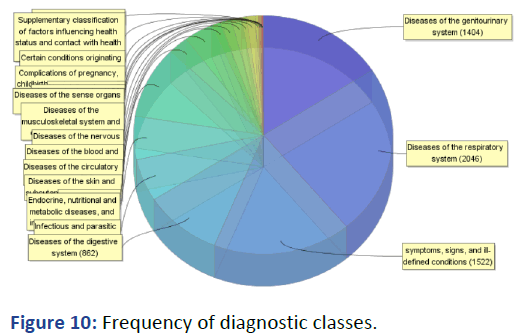
Figure 10: Frequency of diagnostic classes.
To facilitate machine learning, a list of ranges was provided to discretize the counts of icd9 entries. The machine learning process involved their corresponding diagnostic categories and classes. The distribution of inpatient ICD9 entries over the three years study period was divided into 10 groups (Figure 11). These groups displayed relatively homogeneous spectra, with the exception of one group. The distribution consisted of 3 groups with 1 range, 5 groups with 2 ranges, 1 group with 3 ranges, and 1 group (49<ICD9 ≤ 955.150) with 559 ranges (Figure 12). For rule induction using ripper Cohen, et al. a total of 211 rules were included in the model [4]. These rules were capable of predicting the entry count ranges for 68.954% of the data (402 out of 583 training examples) with a purity level of 0.9, minimal prune benefit of 0.25, and a train/test ratio of 9/1 (Figure 13).

Figure 11: Count ranges for colors of Figure 12.
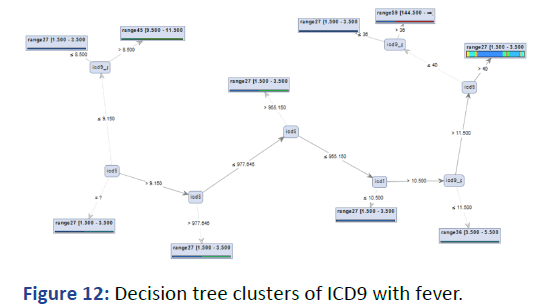
Figure 12: Decision tree clusters of ICD9 with fever.
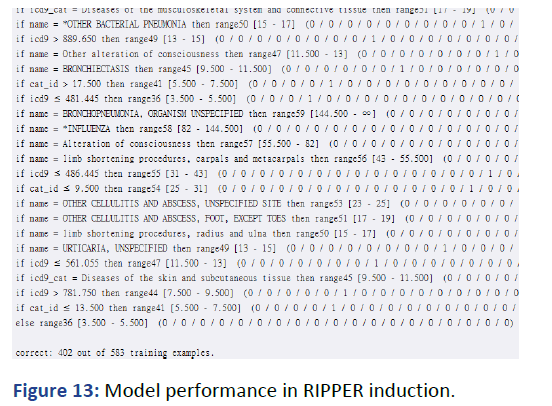
Figure 13: Model performance in RIPPER induction.
Association Rules for Another Fever Related Comorbidity
Training phase: The training periods for each split, focusing on fever related icd9 or ICD9_p codes, spanned 30, 33, 35, and 36 months starting from January 2007. Throughout these periods, the top ten most frequently associated ICD9 codes, based on the number of entries and including other comorbid ICD9 codes, remained consistent. The codes in the top ten list were as follows: Pneumonia (organism unspecified) with code 486, streptococcal septicaemia with code 038.0, urinary tract infection (site not specified) with code 599.0, unspecified septicaemia with code 038.9, *diabetes mellitus without mention of complication with code 250.0, volume depletion with code 276.5, acute bronchitis with code 466.0, acute pharyngitis with code 462, acute tonsillitis with code 463, and bronchus and lung (unspecified carcinoma) with code 162.9 (Table 7). Similarly, the top ten ICD9_p codes also exhibited consistency, with only one change in the order from the 30- month period to the 33 months period. the top ten ICD9_p codes during these periods were: *Septicaemia with code 038, Pneumonia (organism unspecified) with code 486, *diabetes mellitus with code 250, *disorders of fluid (electrolyte and acid-base balance) with code 276, *other disorders of urethra and urinary tract with code 599, *acute bronchitis and bronchiolitis with code 466, acute pharyngitis with code 462, *infections of kidney with code 590, trachea (bronchus and lung carcinoma) with code 162, and acute tonsillitis with code 463 (Table 8).
| ICD9 | Comorbid | Entries | ICD9 | Comorbid | Entries | ICD9 | Comorbid | Entries | ICD9 | Comorbid | Entries |
|---|---|---|---|---|---|---|---|---|---|---|---|
| 486 | 41 | 97 | 486 | 46 | 105 | 486 | 49 | 113 | 486 | 49 | 117 |
| 599 | 34 | 62 | 599 | 38 | 66 | 38 | 46 | 71 | 38 | 47 | 73 |
| 38.9 | 30 | 58 | 38 | 41 | 65 | 599 | 40 | 70 | 599 | 40 | 70 |
| 38 | 33 | 51 | 38.9 | 32 | 63 | 38.9 | 34 | 68 | 38.9 | 34 | 68 |
| 250 | 34 | 49 | 250 | 35 | 50 | 250 | 39 | 60 | 250 | 39 | 61 |
| 276.5 | 20 | 39 | 276.5 | 24 | 46 | 276.5 | 28 | 53 | 276.5 | 29 | 54 |
| 466 | 20 | 34 | 462 | 27 | 40 | 466 | 23 | 46 | 466 | 23 | 46 |
| 462 | 24 | 30 | 466 | 23 | 40 | 462 | 27 | 44 | 462 | 27 | 45 |
| 463 | 19 | 30 | 463 | 20 | 31 | 463 | 21 | 33 | 463 | 21 | 33 |
| 162.9 | 23 | 28 | 162.9 | 24 | 29 | 162.9 | 25 | 31 | 162.9 | 25 | 31 |
| 30 m | 33 m | 35 m | 36 m | ||||||||
Table 7: Top ten frequent ICD9 codes.
| ICD9_p | Comorbid | Entries | ICD9_p | Comorbid | Entries | ICD9_p | Comorbid | Entries | ICD9_p | Comorbid | Entries |
|---|---|---|---|---|---|---|---|---|---|---|---|
| 38 | 50 | 108 | 38 | 57 | 127 | 38 | 60 | 138 | 38 | 60 | 140 |
| 486 | 30 | 97 | 486 | 33 | 105 | 486 | 34 | 113 | 486 | 34 | 117 |
| 250 | 43 | 90 | 250 | 44 | 91 | 250 | 47 | 102 | 250 | 47 | 103 |
| 276 | 35 | 64 | 276 | 39 | 75 | 276 | 43 | 83 | 276 | 43 | 84 |
| 599 | 28 | 61 | 599 | 29 | 65 | 599 | 30 | 69 | 599 | 30 | 69 |
| 466 | 23 | 48 | 466 | 28 | 56 | 466 | 28 | 62 | 466 | 28 | 62 |
| 590 | 16 | 36 | 462 | 23 | 40 | 462 | 23 | 44 | 462 | 23 | 45 |
| 162 | 20 | 30 | 590 | 16 | 38 | 590 | 17 | 40 | 590 | 17 | 40 |
| 462 | 20 | 30 | 162 | 21 | 31 | 162 | 21 | 34 | 162 | 21 | 34 |
| 463 | 14 | 30 | 463 | 15 | 31 | 463 | 16 | 33 | 463 | 16 | 33 |
| 30 m | 33 m | 35 m | 36 m | ||||||||
Table 8: Top ten frequent ICD9_p.
The association rule algorithms, using a support threshold of 1 and a confidence threshold of 1%, demonstrated an increase in the number of rules as the training period became longer. The maximum combination set indicates that there were up to 7 fever-related ICD9 (ICD9_p) codes observed during inpatient hospitalizations in the period from 2007 to 2009 (Table 9). As the training period lengthened, the list of one fever related code appearing on the Left-Hand Side (LHS) of the rules continued to grow in the case of icd9 codes. However, in the case of ICD9_p codes, the list shrank and eventually stabilized (Figure 14).
| Period | Based on | Sets | Rules |
|---|---|---|---|
| 36 m | ICD9 | 7 | 4503 |
| 35 m | ICD9 | 7 | 4473 |
| 36 m | ICD9_p | 7 | 3737 |
| 35 m | ICD9_p | 7 | 3717 |
| 33 m | ICD9 | 4 | 2452 |
| 30 m | ICD9 | 4 | 2234 |
| 33 m | ICD9_p | 4 | 1828 |
| 30 m | ICD9_p | 4 | 1742 |
Table 9: Association rule analysis results with training periods.
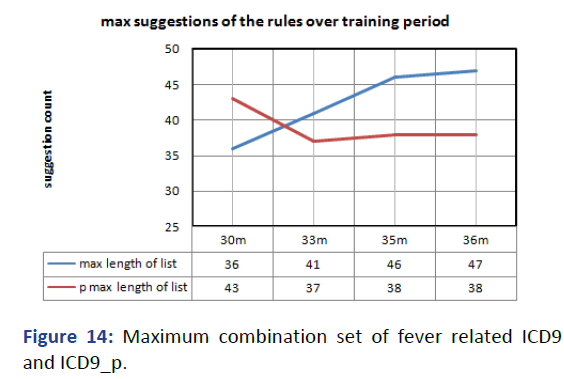
Figure 14: Maximum combination set of fever related ICD9 and ICD9_p.
Testing phase: When testing the trained rules with larger train/test ratios, the correctness percentage (coverage rate) showed a consistent increase. This percentage represents the success rate of inducing another code by having one code on the Left Hand Side (LHS) of the rules. Additionally, the tendencies of admissions helped also showed a strict increase. Notably, the rules based on ICD9_p codes consistently outperformed the icd9 rules (Figure 15). If we train the rules using the entire set of admissions from 2007 to 2009 and then test them using the last 1 or 6 months of data, we can achieve a coverage of 93.243% to 94.231% of entries using ICD9 rules, with 100% admission helped. However, when using ICD9_p rules, the coverage ranges from 86% to 88.462% (Figure 16).
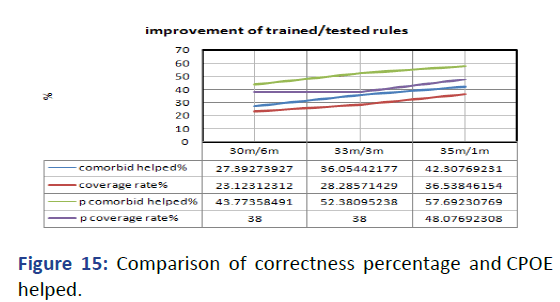
Figure 15: Comparison of correctness percentage and CPOE helped.
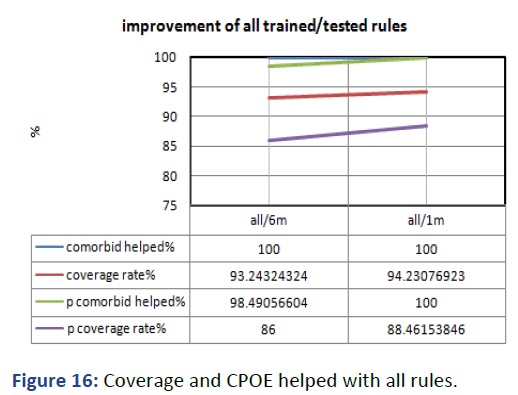
Figure 16: Coverage and CPOE helped with all rules.
Visualization of fever comorbidity: By utilizing the association rules (LHS+RHS as a set) generated with a support of 3 and a confidence threshold of 20%, we can visualize the correlations between fevers and comorbidities through five charts. The charts illustrate the relationship between different diseases, represented by ICD9_P codes, by showing the conditional probability and connecting them with arrows.
Secondary malignant neoplasms of the respiratory and digestive systems were observed to be related twice, with an average probability of 0.75 and a standard deviation of 0.25. These diseases were connected to two entities, with an average probability of 0.5 and a standard deviation of 0.17. Trachea, bronchus, and lung carcinoma were related twice, with an average probability of 0.333 and a standard deviation of 0, and connected to two entities with an average probability of 0.5 and a standard deviation of 0. The malignant neoplasm of the pancreas was related once with a probability of 0.667 and connected to one entity with a chance of 1. The rectum, rectosigmoid junction, and anus carcinoma were also related once, with a probability of 0.667, and connected to one entity with a chance of 1 (Figure 17).
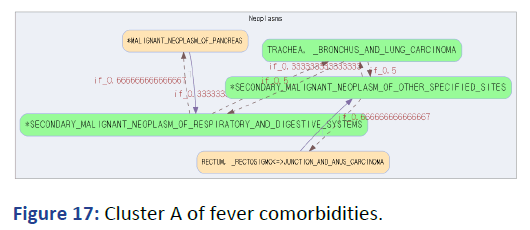
Figure 17: Cluster A of fever comorbidities.
Several malignant neoplasms related to the respiratory and digestive systems. Secondary malignant neoplasms were found in the respiratory and digestive systems, as well as other specified sites. These findings are consistent with previous studies that have shown that metastases are common in these areas [5,6]. In addition, trachea, bronchus and lung carcinoma were also found to be related, which is in line with the well-known association between smoking and lung cancer [7].
Malignant neoplasm of the pancreas was found to be related as well. Pancreatic cancer is known for its poor prognosis and high mortality rate, and early detection is crucial for effective treatment [8]. Lastly, rectum, recto sigmoid junction and anus carcinoma were also identified, which have been shown to be associated with factors such as age, genetics, and lifestyle [9,10].
The disorder of the urethra and urinary tract was related five times, with an average probability of 1 and a standard deviation of 0. These diseases were also connected to five entities, with an average probability of 0.2 and a standard deviation of 0. Hyperplasia of the prostate was related once with a probability of 0.2 and connected to one entity with a chance of 1. Cervix uteri carcinoma, symptoms involving the urinary system, calculus of the kidney and ureter, and bladder carcinoma were each related once, with a probability of 0.2, and connected to one entity with a chance of 1 (Figure 18).
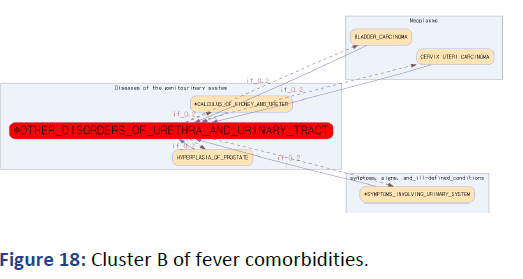
Figure 18: Cluster B of fever comorbidities.
Disorders of the urinary tract are common and include various conditions such as urinary incontinence, urinary tract infections, and bladder stones. One of the most common disorders of the urinary tract is kidney stone or calculus of kidney and ureter, which can cause severe pain and discomfort. The prevalence of kidney stones has been increasing worldwide and can lead to chronic kidney disease and renal failure if left untreated [11].
Prostate hyperplasia is a common condition among older men and can cause lower urinary tract symptoms such as urinary frequency and urgency. In some cases, it can progress to urinary retention and require surgical intervention [12]. Cervical carcinoma is a type of cancer that affects the cervix, which is the lower part of the uterus that connects to the vagina. It is one of the most common types of cancer among women and is usually caused by the Human Papillomavirus (HPV) [13].
Bladder carcinoma is also a type of cancer that affects the bladder, which is the organ that stores urine. It is more common in men than in women and is usually caused by tobacco smoking and exposure to certain chemicals [14].
Abdomen and pelvis symptoms (5 occurrences, average chance of 1 with a standard deviation of 0; 5 entities connected with an average chance of 0.2 and a standard deviation of 0), inflammatory disease of ovary, fallopian tube, pelvic tissue, and peritoneum (1 occurrence with a chance of 0.2; 1 entity connected with a chance of 1), intestinal obstruction without hernia (1 occurrence with a chance of 0.2; 1 entity connected with a chance of 1), cholelithiasis (1 occurrence with a chance of 0.2; 1 entity connected with a chance of 1), unspecified appendicitis (1 occurrence with a chance of 0.2; 1 entity connected with a chance of 1), and acute appendicitis (1 occurrence with a chance of 0.2; 1 entity connected with a chance of 1) (Figure 19).
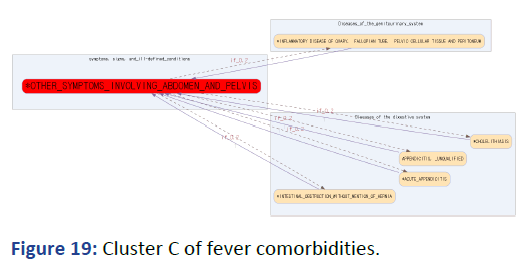
Figure 19: Cluster C of fever comorbidities.
Regarding the diseases related to the abdomen and pelvis, there have been several studies conducted to investigate the different symptoms and diseases associated with this region of the body. For instance, one study found that "abdominal pain is a common symptom that can be associated with a wide range of conditions affecting the gastrointestinal tract, urinary tract, reproductive system, and other organs in the abdomen and pelvis" [15].
Inflammatory diseases of the ovary, fallopian tube, pelvic cellular tissue, and peritoneum are also common in women. According to a study, "Pelvic Inflammatory Disease (PID) is a serious complication of Sexually Transmitted Infections (STIs) that can lead to chronic pelvic pain, ectopic pregnancy, and infertility" [16].
Intestinal obstruction is another condition that can cause abdominal pain and discomfort. A study found that "intestinal obstruction is a medical emergency that requires immediate diagnosis and treatment" [17].
Cholelithiasis, commonly known as gallstones, is a condition where stones form in the gallbladder. According to a study, "gallstones are a common digestive problem that can cause abdominal pain, nausea, and vomiting" [18].
Appendicitis is another common condition that affects the abdomen. According to a study, "appendicitis is a medical emergency that requires surgery to remove the inflamed appendix" [19].
Respiratory system and chest symptoms (2 occurrences, average chance of 0.75 with a standard deviation of 0.25; 2 entities connected with an average chance of 0.5 and a standard deviation of 0), digestive system symptoms (2 occurrences, average chance of 0.75 with a standard deviation of 0.25; 2 entities connected with an average chance of 0.5 and a standard deviation of 0), nutrition, metabolism, and development concerns (2 occurrences, average chance of 0.5 with a standard deviation of 0; 2 entities connected with an average chance of 0.5 and a standard deviation of 0), the hunger, thirst, and exposure external cause code (1 occurrence with a chance of 0.5; 1 entity connected with a chance of 1), and other forms of acute and subacute ischemic heart disease (1 occurrence with a chance of 0.5; 1 entity connected with a chance of 1) (Figure 20).

Figure 20: Cluster D of fever comorbidities.
Respiratory and chest symptoms: In a study by Smith, et al. it was found that individuals with Chronic Obstructive Pulmonary Disease (COPD) commonly present with symptoms such as coughing, wheezing, and chest tightness. Another study by Chen, et al., revealed a significant association between chest symptoms and the risk of developing pneumonia [20].
Digestive system symptoms: A study by Yang, et al., found that individuals with Inflammatory Bowel Disease (IBD) often experience symptoms such as abdominal pain, diarrhea, and vomiting. Another study by Kang, et al., showed that symptoms such as bloating and constipation are common in individuals with Irritable Bowel Syndrome (IBS).
Nutrition, metabolism, and development symptoms: A study by Dehghan, et al., investigated the association between metabolic syndrome and various symptoms such as fatigue, weakness, and difficulty concentrating. Another study by Ryan, et al., examined the relationship between nutritional status and symptoms such as malaise and weight loss in patients with cancer.
Ischemic heart disease: In a study by Lee, et al., it was found that individuals with acute coronary syndrome commonly present with symptoms such as chest pain and shortness of breath.
Pneumonia, unspecified organism, was related 3 times with an average chance of 1 and a standard deviation of 0, and was connected to 3 entities with an average chance of 0.333 and a standard deviation of 0. Diabetes mellitus also had 3 related occurrences with an average chance of 1 and a standard deviation of 0, and connected to 3 entities with an average chance of 0.333 and a standard deviation of 0. Female breast carcinoma was related 2 times with an average chance of 1 and a standard deviation of 0, and was connected to 2 entities with an average chance of 0.5 and a standard deviation of 0. Symptoms involving the head and neck were also related 2 times with an average chance of 1 and a standard deviation of 0, and connected to 2 entities with an average chance of 0.5 and a standard deviation of 0. Septicaemia, nonsuppurative otitis media and eustachian tube disorders, acute but Illdefined cerebrovascular disease, infections of kidney, A2401, disorders of fluid, electrolyte, and acid-base balance, hydronephrosis, A3121, Ill-defined intestinal infections, liver abscess and sequelae of chronic liver disease, acute tonsillitis, general symptoms, bacterial meningitis, bronchitis (not specified as acute or chronic), A2094, meningitis of unspecified cause, acute and subacute necrosis of liver, chronic ulcer of skin, A323, occlusion of cerebral arteries, late effects of cerebrovascular disease, and pleurisy, were each related 1 time with an average chance of 1, and connected to 1 entity with an average chance of 1. Bacterial meningitis, bronchitis, A2094, meningitis of unspecified cause, acute and subacute necrosis of liver, chronic ulcer of skin, a323, occlusion of cerebral arteries, late effects of cerebrovascular disease, and pleurisy, were each related 1 time with an average chance of 0.5 and connected to 1 entity with an average chance of 1 (Figures 21 and 22).
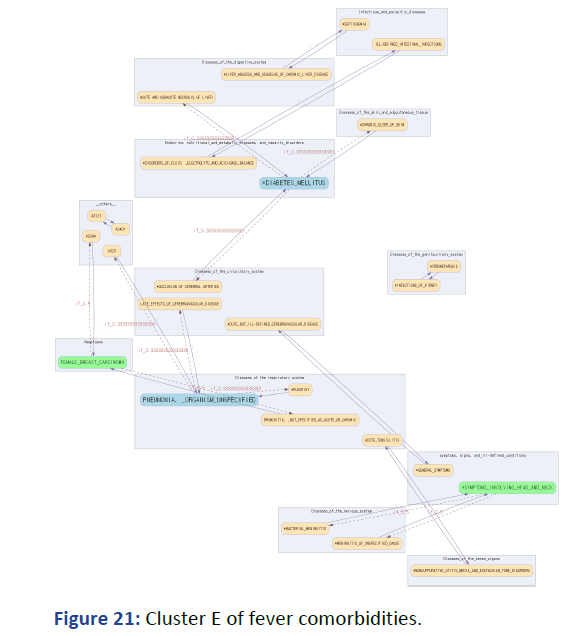
Figure 21: Cluster E of fever comorbidities.
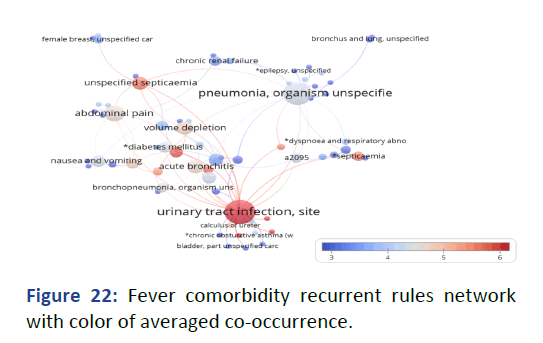
Figure 22: Fever comorbidity recurrent rules network with color of averaged co-occurrence.
Pneumonia, organism unspecified, and diabetes mellitus: Pneumonia has been shown to be more common in patients with diabetes mellitus. A study by Shah, et al., found that diabetic patients were at increased risk of developing pneumonia, possibly due to impaired immune function and altered respiratory mechanics.
Female breast carcinoma and diabetes mellitus: Several studies have reported an association between diabetes mellitus and breast cancer. A meta-analysis by Luo, et al., found that women with diabetes mellitus had a 20% higher risk of developing breast cancer compared to women without diabetes. This could be due to the higher levels of insulin and insulin like growth factors that are present in diabetic patients.
Symptoms involving head and neck and diabetes mellitus: Diabetes mellitus has been associated with an increased risk of certain head and neck symptoms, including dry mouth and burning mouth syndrome. A study by Raval, et al., found that diabetic patients had a higher prevalence of these symptoms compared to non-diabetic patients. The exact mechanism for this association is unclear.
Septicaemia, nonsuppurative otitis media and eustachian tube disorders, infections of kidney, disorders of fluid, electrolyte and acid-base balance, liver abscess and sequelae of chronic liver disease, bacterial meningitis, meningitis of unspecified cause, chronic ulcer of skin, occlusion of cerebral arteries, pleurisy, and acute but ill-defined cerebrovascular disease.
No specific investigations were provided for these associations. However, it is well-known that many of these conditions can arise as a complication of another underlying disease or condition, such as diabetes mellitus or pneumonia. Further research would be needed to establish the exact nature of these relationships (Table 10).
| ICD9 train/test | 30 m/6 m | 33 m/3 m | 35 m/1 m | all/1 m | all/6 m |
|---|---|---|---|---|---|
| Only one related admission | 193 | 72 | 13 | 13 | 193 |
| Comorbid admission | 303 | 147 | 26 | 26 | 303 |
| Comorbid admission helped | 83 | 53 | 11 | 26 | 303 |
| Comorbid admission helped % | 27.393 | 36.054 | 42.308 | 100 | 100 |
| Code in another's list | 154 | 99 | 19 | 49 | 621 |
| Code not in another's list | 512 | 251 | 33 | 3 | 45 |
| Coverage rate % | 23.123 | 28.286 | 36.538 | 94.231 | 93.243 |
| Max length of suggestion list | 36 | 41 | 46 | 47 | 47 |
| ICD9_p train/test | 30 m/6 m | 33 m/3 m | 35 m/1 m | all/1 m | all/6 m |
| Only one related admission | 194 | 72 | 13 | 13 | 194 |
| Comorbid admission | 265 | 147 | 26 | 26 | 265 |
| Comorbid admission helped | 116 | 77 | 15 | 26 | 261 |
| Comorbid admission helped % | 43.774 | 52.381 | 57.692 | 100 | 98.491 |
| Code in another's list | 209 | 133 | 25 | 46 | 473 |
| Code not in another's list | 341 | 217 | 27 | 6 | 77 |
| Coverage rate % | 38 | 38 | 48.077 | 88.462 | 86 |
| Max length of suggestion list | 43 | 37 | 38 | 38 | 38 |
Table 10: Max length of recommended code lists over time.
This study conducted over the period of 2007 to 2009 revealed that fever consistently ranked as the most frequent ICD9 code among hospitalizations, with an average of 3.82111 codes per admission. The top two common codes associated with fever were urinary tract infection (site not specified) accounting for 9.115% and Pneumonia (organism unspecified) accounting for 7.183%. In terms of fever-related diagnostic categories, *other disorders of urethra and urinary tract was the most frequent with 9.196%, followed by pneumonia (organism unspecified) with 6.938%. Among the diagnostic classes, diseases of the respiratory system accounted for 24.555% and symptoms and signs and ill-defined conditions accounted for 16.93%. The distribution of entry counts per code exhibited a long tail pattern, with 80% of fever related ICD9 codes falling within 14 entries, and 80% of fever related diagnostic categories falling within 26 entries. By utilizing decision tree and rule induction techniques, it was possible to predict the range of accumulated ICD9 entry counts based on the code's value, its diagnostic category, and its diagnostic class.
The top ten ICD9 codes and diagnostic categories related to fever consistently show a high level of consistency in terms of comorbidity. When recommending ICD9 codes and diagnostic categories based on association rules with a support of 1, the maximum lengths of these recommendation lists are observed to strictly increase over time for ICD9 codes (from 36 to 47). However, in the case of diagnostic categories, the recommendation lists shrink and eventually stabilize. Diagnostic categories provide a higher level of granularity and are based on a 1% confidence threshold. As the training period increases, the coverage rates of the recommended admission entries in the test sample also increase significantly. However, the recommendation of diagnostic categories consistently achieves higher coverage rates compared to ICD9 recommendations, given the same train/ test ratio. It should be noted that when performing fully trained recommendations against the split test sample, the coverage rate of ICD9 recommendations outperforms the coverage rate of diagnostic category recommendations. This difference in performance may be attributed to the fact that the modeling of ICD9 codes is not yet overfitting, whereas the modeling of diagnostic categories may be affected by the 1% confidence threshold, leading to some information loss. This is particularly evident in the case of the hottest related diagnostic category (*septicaemia), which has 108 to 140 related entries. Therefore, if the model is trained within a 35- month period, the recommendation of diagnostic categories may achieve a coverage rate of 48.077% in the hospitalization entries of the following month. The remaining part of ICD9 codes can be easily assisted by the automatic completion of Computerized Physician Order Entry (CPOE).
At least this is a clearly vital role in advancing our understanding of various medical conditions and diseases. From kidney stones to pneumonia, diabetes to cancer, this study highlighted demonstrate the importance of ongoing investigation into the causes, symptoms, and treatments of these complex health issues. Through collaboration and continued analysis of both quantitative and qualitative data, researchers can contribute to the development of effective interventions and improve patient outcomes. As we move forward, it is crucial that we continue to prioritize and support medical research efforts in order to improve the health and well-being of individuals and communities worldwide.
All data generated or analyzed during this study are included in this published article and its supplementary information files.
All authors have completed the unified competing interest form at www.icmje.org/coi_disclosure.pdf (available on request from the corresponding author) and declare no financial relationships with any organizations that might have an interest in the submitted work in the previous 3 years; and no other relationships or activities that could appear to have influenced the submitted work.
All procedures performed in studies involving human participants were in accordance with the ethical standards of the institutional and/or national research committee and with the 1964 Helsinki declaration and its later amendments or comparable ethical standards. This article does not contain any studies with human participants performed by any of the authors.
[Crossref] [Google Scholar] [PubMed]
[Crossref] [Google Scholar] [PubMed]
[Crossref] [Google Scholar] [PubMed]
[Crossref] [Google Scholar] [PubMed]
[Crossref] [Google Scholar] [PubMed]
[Crossref] [Google Scholar] [PubMed]
[Crossref] [Google Scholar] [PubMed]
[Crossref] [Google Scholar] [PubMed]
[Crossref] [Google Scholar] [PubMed]
[Crossref] [Google Scholar] [PubMed]
[Crossref] [Google Scholar] [PubMed]
Citation: Frank H (2023) Features and Data Graphs of Hospitalisation Fever: A Case in Teaching Medical Centres. Qual Prim Care. 31:37.
Copyright: © 2023 Frank H. This is an open-access article distributed under the terms of the Creative Commons Attribution License, which permits unrestricted use, distribution, and reproduction in any medium, provided the original author and source are credited.